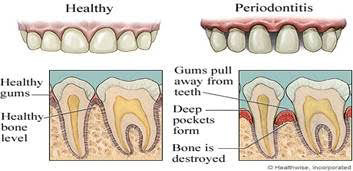We want all our patients to be informed decision makers and fully understand any health issues you face. That’s why we’ve developed our website which we’ve included descriptions of some of our leading services on this page. We encourage you to visit this site whenever you have concerns about your teeth.
From routine cleanings and fillings to bruxism devices, Farmington Family Dental is
equipped to handle all your dental needs.
- Bonding
- Cosmetic Dentistry
- Crown and Bridges
- Dentures
- Dental Implants
- Veneers
- Sealants
- Root Canal Therapy
- Extractions
- Periodontal Scaling and Root Planing
- Invisalign
- Whitening
- Jaw / TMJ
Initial Oral Examination
Your initial oral examination includes a visual examination, charting, periodontal probing, diagnosis and treatment recommendations. We will also take x-rays, which includes the panoramic x-ray for proper diagnosis of the anterior (front) and posterior (back) teeth as well as the bite-wing x-ray series for proper diagnosis of inter-proximal decay of posterior teeth.
What is the difference between an ordinary cleaning and deep cleaning?

There is some confusion about the difference between scaling and root planing. Scaling is basically the process of removing dental tartar from the surface of the teeth. Root planing is the process of smoothing the root surfaces and removing any infected tooth structure. If you have gum disease or gum pocketing, the gum pockets around the teeth will have deepened, allowing tartar deposits to form under the gum line.
Periodontal Scaling and Root Planing
If plaque and tartar are left on the teeth, it provides the right conditions for bacteria to thrive. The bacteria can irritate the gums, which mean that they bleed more easily. You may notice this if you are brushing your teeth, or eating, and sometimes your gums may bleed a bit. This is the early stage of gum disease called Gingivitis. If you have gingivitis, your dentist or hygienist will clean your teeth by scaling and polishing them. They may also recommend an antiseptic mouthwash containing chlorhexidine, and show you how to brush and floss your teeth effectively. Most adults have some degree of gum disease.
If gingivitis is not treated and nothing is done about it, the inflammation will work its way down towards the foundations of the tooth causing a “periodontal pocket”.
Gum Disease can break down the support (bone) structures of the teeth, so that eventually, they will become loose. The problem is that until it gets quite severe, the person often has no symptoms. Sadly, the damage to the support structures of the teeth is irreversible. The good news is that if gum disease is caught in time, its progression can be halted and improved upon, and that is the key.
To stop gum disease from progressing, your dentist may advise periodontal therapy, or deep cleaning. This gets rid of the bacteria in the pocket and provides the necessary conditions for healing to occur.
Implants
Types of Implants
- Full upper replacements: The upper set of teeth is replaced with implants.
- Anterior replacement: Implants are used to replace the front teeth (also called incisors and cupids).
- Full lower replacement: The lower set of teeth is replaced with implants. Full lower replacement usually only uses six implants (near the front), which are used to anchor a denture. This obviates the need for denture adhesive.
- Posterior replacement: Implants are used to replace the bicuspids and molars (the back teeth).
- Single tooth replacement
Steps For These Procedures Include...
- Missing tooth roots are replaced with implants, which are covered under the gum line.
- A healing period of six months allows implants to take.
- The implants are uncovered and extensions attached.
- Replacement teeth are affixed to the implants and extensions.
Crowns
Crowns are synthetic caps, usually made of a material like porcelain, placed on the top of a tooth. They are typically used to restore a tooth’s function and appearance following a restorative procedure such as a root canal. When decay in a tooth has become so advanced that large portions of the tooth must be removed, crowns are often used to restore the tooth. Crowns are also used to attach bridges, cover implants, prevent a cracked tooth from becoming worse, or an existing filling is in jeopardy of becoming loose or dislocated. Crowns also serve a cosmetic use, and are applied when a discolored or stained tooth needs to be restored to its natural appearance.
Procedure
Veneers
In just two or three dental visits, a veneer can reverse years of stains caused by foods, caffeine and tobacco use. Special thin laminates, called veneers, can also be used to correct discolored, worn down, cracked and chipped teeth. Veneers can also be used to close unsightly gaps between teeth. Stronger types of veneers made of porcelain, also called composite veneers, typically last longer because they are bonded to the tooth.
An impression of the tooth must be made and a veneer molded by a lab technician. Because veneers require a small amount of enamel to be removed, they are permanent and non-reversible.
The process involves buffing the tooth, removing an extremely thin layer of the tooth to allow for the thickness of the veneer, an impression of the tooth, and final bonding of the veneer to the tooth with special cement. A special light is used to complete the process.
Invisalign

What is Invisalign®?
- Invisalign® is the invisible way to straighten your teeth without braces.
- Invisalign® uses a series of clear, removable aligners to straighten your teeth without metal wires or brackets.
- Invisalign® has been proven effective in clinical research and in orthodontic practices nationwide.
How Does Invisalign® Work?
- You wear each set of aligners for about 2 weeks, removing them only to eat, drink, brush, and floss.
- As you replace each aligner with the next in the series, your teeth will move little by little, week by week - until they have straightened to the their final position.
- You'll visit us about once every 6 weeks to ensure that your treatment is progressing as planned.
- Total treatment time averages 9 - 15 months and the average number of aligners during treatment is between 18 - 30, but both will vary from case to case.
How Are Aligners Made? You'd Be Amazed...
- The aligners are made through a combination of our expertise and 3-D computer imaging technology.
